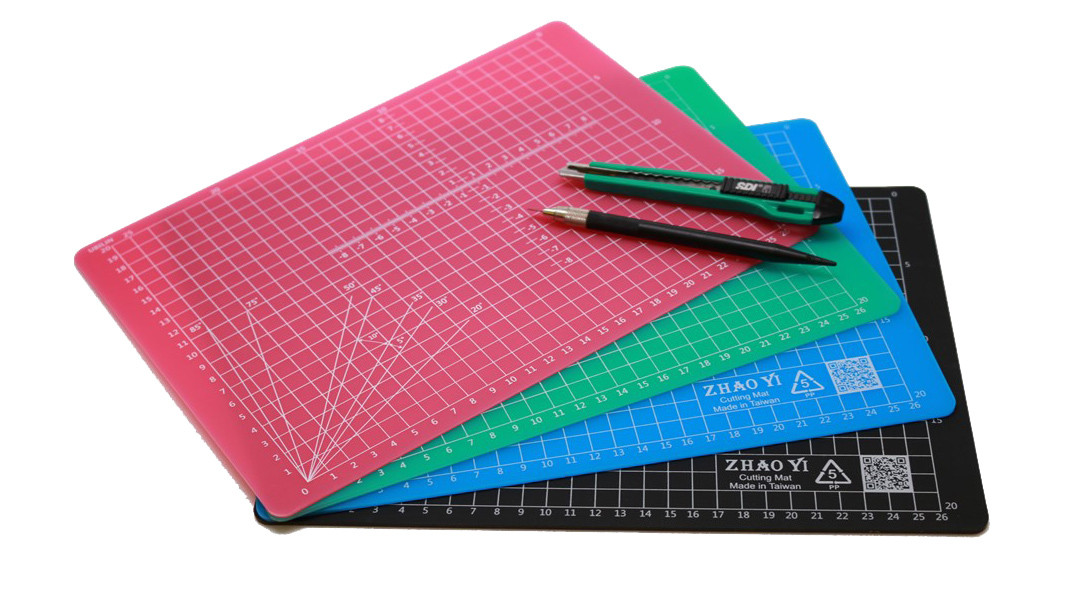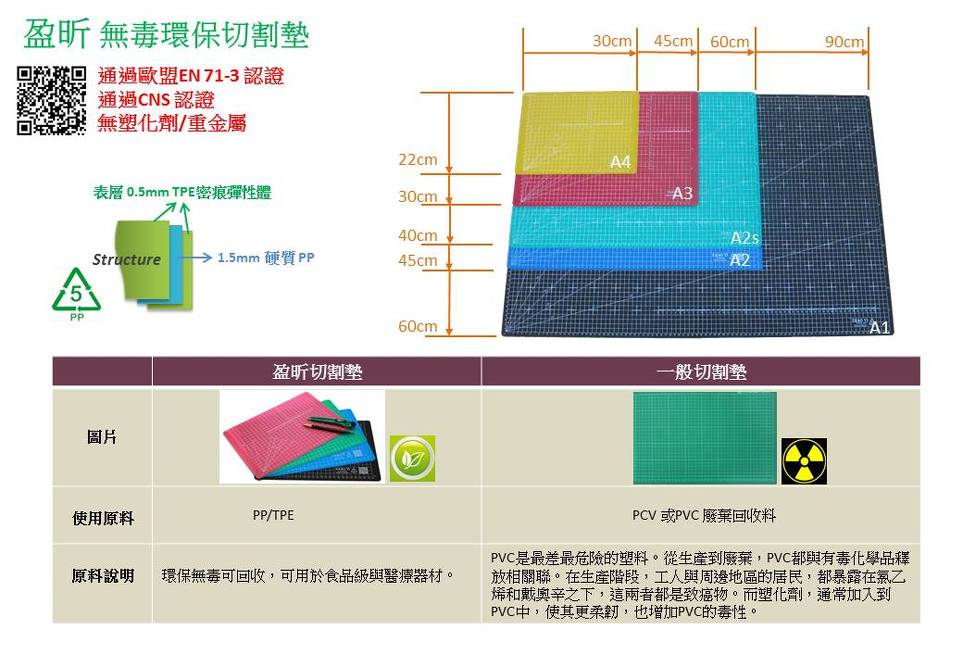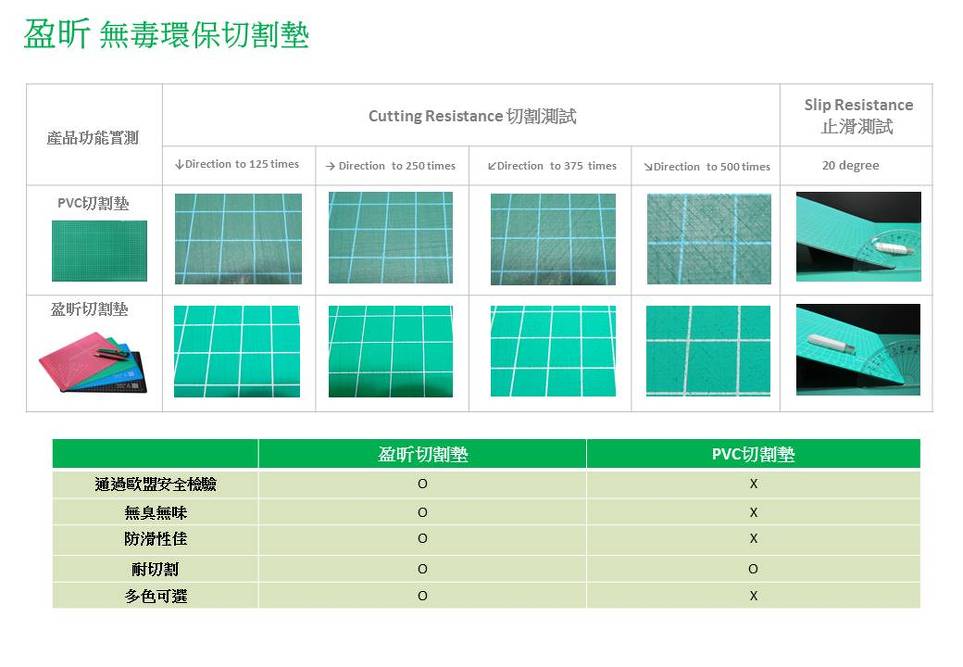【彰化芳苑雞蛋的戴奧辛來自何處?】
據媒體追蹤彰化戴奧辛雞蛋的報導:
"當地居民表示,芳苑鄉有上百戶蛋雞場,對於被檢出戴奧辛含量超標感到意外,洪姓居民表示,入夜後常有民眾在養雞場附近燃燒垃圾,更曾經見過燃燒廢電線、塑製品等,連人聞都很臭,何況是雞,希望政府趕快查出真相。"
由於電線電纜的外包覆是PVC(聚氯乙烯)塑膠,而塑膠製品中也很可能會有PVC,或者其油墨可能含氯、又或者含有常用於增加食品包裝袋氣密性的PVDC(聚偏二氯乙烯),這些含氯的碳氫化合物燃燒後都會產生戴奧辛。尤其露天燃燒廢電線電纜,最為嚴重,因為電線電纜中的銅線,是會促進戴奧辛生成的催化劑!(參見:PVC的危害-廢棄階段。http://www.taiwanwatch.org.tw/node/562)
政府除了要制止這種違法燃燒垃圾的行為,更要趕快從源頭禁止PVC等含氯塑膠及油墨的使用。(PVC在哪裡?參見:http://www.taiwanwatch.org.tw/node/641)
媒體報導,參見:
http://news.ltn.com.tw/news/life/breakingnews/2043855
iMAT小樹環保桌墊
2017年4月21日 星期五
2017年1月14日 星期六
嬰幼兒無毒抗菌餐墊
寶寶開始學吃飯後 我們傾盡了心思
小小的嘴 吃進的每一口 都是我們用心製作 最營養天然的食材
用餐的環境 除了保持乾淨
多數父母忽略了.......
鋪上一塊抗菌的餐墊是最不可或缺的
因為
桌子的生菌數非常可觀 外面的桌子甚至比馬桶還髒
雖然吃飯前先洗了手 若小手接觸了桌面 一樣會把細菌病毒吃進口中
因此, 我們設計給嬰幼兒使用的餐墊
除了活潑的圖案 最基本也最重要的功能是
抗 菌
多數父母忽略了.......
鋪上一塊抗菌的餐墊是最不可或缺的
因為
桌子的生菌數非常可觀 外面的桌子甚至比馬桶還髒
雖然吃飯前先洗了手 若小手接觸了桌面 一樣會把細菌病毒吃進口中
因此, 我們設計給嬰幼兒使用的餐墊
除了活潑的圖案 最基本也最重要的功能是
抗 菌
市面上號稱"抗菌"產品
極少數是真的有抗菌功能
此外 我們刻意將彩圖置於為內層 (已申請專利)
永遠不會退色 亦不會汙染食物
食品級彈性塑料製成 耐刮抗菌又無毒
何必再買貴鬆鬆的中國製的歐美牌餐墊
台灣設計 台灣製造 品質優良 工廠直營 沒有代理商
將中間層層相疊的利潤 回歸給消費者







現有圖案:


產品實際使用圖:

好清理 可水洗
~抗菌功能不會因為水洗而減退~
無毒抗菌餐墊購買連結
2016年11月19日 星期六
無毒切割桌墊介紹
受夠了切割墊的臭味嗎?
不要為了保護桌子, 卻反而犧牲了健康
您或許留意到,
現在學校會要求學生必須買切割墊當學校桌墊使用,
出發點是善意的:
現在學校會要求學生必須買切割墊當學校桌墊使用,
出發點是善意的:
為了保護課桌與清潔方便.
大部分學校為了作業便利,將桌墊與其他雜項統一購買,
不過卻讓學生失去了選擇桌墊材質的機會。
不過卻讓學生失去了選擇桌墊材質的機會。
從之前的塑化劑風暴,我們漸漸知道,
仿間一般常見的綠色切割墊都是PVC材質。
仿間一般常見的綠色切割墊都是PVC材質。
有些廉價劣質的切割墊,則是用不知道何處的PVC回收廢料做成。
對小學生來說,在校一天八小時,六年都用同一塊桌墊,
寫功課,吃午餐,趴著睡午覺。
毒物的危害更容易一點一滴的累積在發育孩童的體內。
寫功課,吃午餐,趴著睡午覺。
毒物的危害更容易一點一滴的累積在發育孩童的體內。
從PVC揮發出的濃烈化學味,
使塑化劑和有毒金屬藉由附著在微小的塵埃顆粒中,被吸入肺部。
使塑化劑和有毒金屬藉由附著在微小的塵埃顆粒中,被吸入肺部。
現在連橡皮擦都標榜PVC-free,對於體積更大,接觸面積更廣,
使用時間更長的桌墊,我們更不該漠視。
使用時間更長的桌墊,我們更不該漠視。
經濟部標準檢驗局為確保產品品質及消費安全,已於101年1月
12日制定公布 CNS15527事務文具用品一般安全要求> 已規定
供職場、學校、家庭等場所使用之ㄧ般文具用品中,禁止添加
這八種鄰苯二甲酸酯類塑化劑
12日制定公布 CNS15527事務文具用品一般安全要求> 已規定
供職場、學校、家庭等場所使用之ㄧ般文具用品中,禁止添加
這八種鄰苯二甲酸酯類塑化劑
我們認為:
給孩子或您用的桌墊,不但應該通過經濟部認證,
需要通過最嚴格的歐盟認證。
需要通過最嚴格的歐盟認證。
PVC小常識:
PVC是最差最危險的塑料。從生產到廢棄,
PVC都與有毒化學品釋放相關聯。
在生產階段,工人與周邊地區的居民,
都暴露在氯乙烯和戴奧辛之下,
這兩者都是致癌物。
而塑化劑,通常加入到PVC中,
使其更柔韌,也增加PVC的毒性。
your health to protect the table.You may notice, all of the common
green cutting mats are PVC.Some cheap low-quality cutting pads,
might made from recycling PVC material of medical waste.
For Taiwan's primary school students, eight hours a day, six years
in school, write homework, eat lunch, take a nap with the same PVC
desk mat. The hazards of poison more easily accumulate in the child's
body. Plasticizers and toxic metals from strong chemical smell out of
PVC mat by attaching to the tiny dust particles, are inhaled into the lungs.
Now even the erasers are advertised PVC-free, for larger, more extensive
contact area, longer using time of the desk mats, we should not ignore
the safety.
Taiwan Ministry of Economic Affairs Standard Inspection Bureau was
announced CNS15527 to prohibit of these eight phthalate plasticizers
(DMP, DEP, DEHP, DBP, BBP, DINP, DIDP, DNOP) in general stationery
for the workplace, schools, families and other places to use .
PVC-free cutting mats are not only need to be certified by Taiwan Ministry of Economic Affairs, also EU certification.



規格: A1: 600 x 900 x 2.5 mm
( 現有庫存: 水藍 / 淺綠 / 黑 / 白 )
( 現有庫存: 水藍 / 淺綠 / 黑 / 白 )
A1 果凍白

A1 水藍色

A1 淺綠色

A1 黑色

2016年10月1日 星期六
塑化劑超標的學生桌墊
過年期間一位憂心忡忡的家長來信,他告訴我們文具店很常販售的深綠色白色格紋「美工切割墊」大多竟是PVC材質,深入仔細探究,不光只是切割墊,例如協會辦公室桌上也有一塊多年前別人致贈的事務桌墊,這種桌墊大多是在五金行裁切販售,也是PVC材質,這種事務桌墊通常是兩層一組,底層是不透明綠色,上層則透明綠色,早年一些保險業者會把這類桌墊印上公司資訊,製成免費廣告贈品贈與潛在客戶。而PVC材料具備便宜、抗汙、防水的特性,在商人眼中是不可多得的優良特質,因此PVC材料也被加工製成A3尺寸大小的「餐盤墊」,或是製成燙金雕花的「茶几墊」,甚至壓印製成小孩子沐浴用的「沐浴地墊」,舉凡「塑膠墊類」的商品都非常容易和PVC沾上關係。
美工切割墊材質其實是一個大問題,綜觀現在學校教室的現況,大部份學生都會在桌上放上美工切割墊,或是便宜的事務桌墊、甚至部份老師也會要求每個學生使用切割墊或是桌墊,以防木製桌子因切割受損,但卻忽略告知學生應購買非PVC的切割墊,然而學生每天都會趴在桌上午休、在桌上用餐,等於是讓學生曝露在PVC的風險當中。經濟部標準檢驗局為確保產品品質及消費安全,已於101年1月12日制定公布CNS 15527《事務文具用品一般安全要求》,已規定供職場、學校、家庭等場所使用之ㄧ般文具用品中的8種鄰苯二甲酸酯類塑化劑(DMP、DEP、DEHP、DBP、BBP、DINP、DIDP、DNOP)及其混合物含量總和不得超過0.1wt%(重量比),等於是禁止添加這八種塑化劑的使用,標檢局當初訂定這個標準是要讓業者有個方向可以自行約束,但三年過去,可能仍有不少不宵廠商仍然存有僥倖的心態,所以坊間流通著的PVC膠墊,可能大多還是不符合國家標準。即使符合國家標準,所使用的非鄰苯二甲酸酯類塑化劑也不見得安全,而且我們也別忘了PVC在製造與廢棄階段的危害,是很難避免的。
我們去電給經濟部標準檢驗局第二組組長,向他表達美工切割墊的問題,並要求標檢局不應只是收到訊息,更應發動相關動作。因此標檢局第二組張文彬組長表示,他將即刻指派相關科長級同仁發動市場購樣檢驗,不合格者標檢局將依《消費者保護法》等相關規定,要求業者下架、回收處理,我們樂見官方這樣看似積極的回應,但也覺得官方組織應多加派人員對疑似PVC製品的產品作通盤的調查,而不是等到民眾回報才有作為。
看守台灣環保團體
2016年9月1日 星期四
2016年8月1日 星期一
黃色小鴨含PVC塑毒 恐導致不孕
華視新聞
可愛的黃色小鴨是很多大人小孩喜愛的玩具,但關於製作的材質,恐怕您要特別小心了。
目前市售的小鴨商品,多半是PVC材質,如果裡頭含有塑化劑和重金屬,小孩子不小心吃到,可能會導致生殖能力異常,甚至認知障礙等等。
我們也實際找了專家,來檢測市售的小鴨商品,到底有沒有毒。較簡易的測試法是聞看看有沒有塑膠的惡臭,有惡臭較可能是毒PVC製成.
2016年7月10日 星期日
Many Good Reasons to go PVC-free
Many Good Reasons to go PVC-free
有許多好理由讓你遠離PVC
加拿大防癌主治醫生大聲疾呼: 別再使用PVC !!!
By Dr. Natasha Klemm, ND, PCN Co-Chair
娜塔莎博士克姆,ND,PCN 聯合主席 著文
娜塔莎博士克姆,ND,PCN 聯合主席 著文
In a large review of health and environmental impacts of plastics, polyvinyl chloride came out as the worst – a high volume material with carcinogenic ingredients, toxic exposures during manufacturing, use and disposal, and longevity as toxic trash in the environment.
塑膠帶給人們健康和環境的影響有許多研究與討論,其中,沒有比聚氯乙烯(PVC)更糟糕的 - 不論製造,使用和處置,都存在著高劑量的致癌成分。並留給環境無法分解的有毒垃圾。
塑膠帶給人們健康和環境的影響有許多研究與討論,其中,沒有比聚氯乙烯(PVC)更糟糕的 - 不論製造,使用和處置,都存在著高劑量的致癌成分。並留給環境無法分解的有毒垃圾。
Toxic Ingredients
有毒成分
有毒成分
Polyvinyl chloride (PVC) is a plastic resin, made by repetitive joining together of vinyl chloride molecules or monomer. As summarized by the European Commission, PVC was first developed in the 1930s and production has dramatically increased since the 1950s to a current world production of more than 20 million tonnes per year. PVC is tough, weather, water and chemical resistant, and electrically insulating, but it is not stable when exposed to heat and light. Stabilizers, such as heavy metals lead and cadmium, are added to improve its stability and maintain its rigidity. PVC is made flexible with the addition of phthalates, such as DHEP (bis-2-ethylhexyl phthalate).
聚氯乙烯(PVC)是一種塑料樹脂,由氯乙烯分子或重複單體連接在一起形成。歐洲委員會表示,PVC最早是在1930年代開發的,自1950年代生產量已急劇上升到目前全世界每年生產超過20萬噸。 PVC基本上是蠻堅韌的物質,它耐候,耐濕氣和耐化學性,同時也是電絕緣的,但暴露於熱和光時,它是不穩定的。因此穩定劑,如重金屬鉛和鎘,被添加以改善其穩定性和保持其剛性。而藉由添加鄰苯二甲酸酯(塑化劑)可使PVC柔軟,如DHEP(雙-2-乙基己基鄰苯二甲酸酯)。
聚氯乙烯(PVC)是一種塑料樹脂,由氯乙烯分子或重複單體連接在一起形成。歐洲委員會表示,PVC最早是在1930年代開發的,自1950年代生產量已急劇上升到目前全世界每年生產超過20萬噸。 PVC基本上是蠻堅韌的物質,它耐候,耐濕氣和耐化學性,同時也是電絕緣的,但暴露於熱和光時,它是不穩定的。因此穩定劑,如重金屬鉛和鎘,被添加以改善其穩定性和保持其剛性。而藉由添加鄰苯二甲酸酯(塑化劑)可使PVC柔軟,如DHEP(雙-2-乙基己基鄰苯二甲酸酯)。
Vinyl chloride is a known carcinogen, clearly associated with a rare form of liver cancer called angiosarcoma as well as brain cancer. The extensive review by the U.S. Agency for Toxic Substances and Diseases Registry (ATSDR) found that chronic low level exposure is also associated with degenerative bone changes, circulatory disturbances in extremities, skin lesions, and damage to the liver, spleen, lungs, immune and nervous system.
氯乙烯是一種已知的致癌物質,顯然與一種罕見的型式的肝癌被稱為血管肉瘤同時也是腦癌有關。由美國有毒物質和疾病登記署(ATSDR)的廣泛審查發現,長期低劑量接觸也與退行性骨質改變,四肢循環障礙,皮膚損傷和肝,脾,肺,免疫和神經系統的損害。
氯乙烯是一種已知的致癌物質,顯然與一種罕見的型式的肝癌被稱為血管肉瘤同時也是腦癌有關。由美國有毒物質和疾病登記署(ATSDR)的廣泛審查發現,長期低劑量接觸也與退行性骨質改變,四肢循環障礙,皮膚損傷和肝,脾,肺,免疫和神經系統的損害。
Stabilizers such as heavy metals also present environmental health hazards. Lead exposure impairs brain, nervous system, liver, bone and kidney development and function, while causing growth retardation, developmental and psychomotor impairment, blood and immune system toxicity and probably cancer. Cadmium is a known carcinogen, and exposure is also associated with developmental, neurological, renal (kidney) toxicity and bone fragility. Vinyl chloride manufacture has traditionally involved a mercury process, that remains a large source of this global pollutant.
穩定劑如重金屬也存在環境健康危害。鉛會損害大腦,神經系統,肝,骨和腎臟的發育和功能,同時引起生長遲緩,發育和精神運動障礙,血液和免疫系統中毒和癌症的可能。鎘是一種已知的致癌物質和曝光也有發育,神經系統,腎(腎)毒性和骨脆性有關。氯乙烯製造涉及汞製程,是巨大的全球性污染物的重要來源。
穩定劑如重金屬也存在環境健康危害。鉛會損害大腦,神經系統,肝,骨和腎臟的發育和功能,同時引起生長遲緩,發育和精神運動障礙,血液和免疫系統中毒和癌症的可能。鎘是一種已知的致癌物質和曝光也有發育,神經系統,腎(腎)毒性和骨脆性有關。氯乙烯製造涉及汞製程,是巨大的全球性污染物的重要來源。
Phthalates are known to cause serious health consequences. By interfering with testosterone production, they can cause irreversible effects on the male reproductive system, such as low sperm count and quality and undescended testes. The US National Toxicology Program Expert Panel linked DHEP with risks to human development and fertility. Other health risks with phthalate exposure include preterm birth and low birth weight, premature female puberty, ADHD, obesity, diabetes, impaired neurodevelopment, and asthma. Limited actions have been taken for children’s protection.
鄰苯二甲酸酯已經被知道會導致嚴重的健康後果。它會干擾睾丸激素的生產,可能會導致男性生殖系統的不可逆影響,如低精子數量和質量,睾丸未降。美國毒理學計劃專家找出DHEP與人類發展和生育能力的關係。與暴露在塑化劑的其它健康危害,包括早產和出生體重過低,女性青春期過早,過動症,肥胖,糖尿病,神經發育受損和哮喘。為保護兒童,一些措施目前已經被採取。
鄰苯二甲酸酯已經被知道會導致嚴重的健康後果。它會干擾睾丸激素的生產,可能會導致男性生殖系統的不可逆影響,如低精子數量和質量,睾丸未降。美國毒理學計劃專家找出DHEP與人類發展和生育能力的關係。與暴露在塑化劑的其它健康危害,包括早產和出生體重過低,女性青春期過早,過動症,肥胖,糖尿病,神經發育受損和哮喘。為保護兒童,一些措施目前已經被採取。
Vinyl chloride monomer and additives volatilize from PVC and cause, for example, the distinctive chemical smell released from a new shower curtain. Phthalates and toxic metals also cling to tiny dust particles that may penetrate deep in the lungs.
氯乙烯單體和添加劑會從PVC中揮發,例如,獨特的化學氣味從一個新的浴簾釋放。塑化劑和有毒金屬也可能藉由附著在微小的塵埃顆粒中,被吸入肺部。
氯乙烯單體和添加劑會從PVC中揮發,例如,獨特的化學氣味從一個新的浴簾釋放。塑化劑和有毒金屬也可能藉由附著在微小的塵埃顆粒中,被吸入肺部。
Children are Most Vulnerable
兒童是最脆弱的
兒童是最脆弱的
Children are particularly vulnerable to vinyl chloride exposure and its health consequences due to their developing brains and bodies. Infants start life “pre-polluted” due to exposure in the amniotic fluid, umbilical cord blood, and then breast milk. Pound for pound, children eat, drink and breathe more than adults, increasing their toxin amount. Children put toys and other objects in their mouth, leeching chemicals from the objects to their saliva. The highest levels of phthalates are found in the youngest children and in women.
由於大腦和身體正在發育,兒童暴露在氯乙烯中特別容易受到影響。嬰兒則生活在“預先污染的環境”因為暴露在含氯乙烯的羊水,臍帶血和母乳中。一點一滴,兒童吃,喝,呼吸對體重的比例都比成人多,這也增加了他們的毒素量。孩子把玩具和其他物品放入嘴裡,從唾液榨取化學品。最高含量的塑化劑在年紀最小的兒童和婦女的身體裡發現。
由於大腦和身體正在發育,兒童暴露在氯乙烯中特別容易受到影響。嬰兒則生活在“預先污染的環境”因為暴露在含氯乙烯的羊水,臍帶血和母乳中。一點一滴,兒童吃,喝,呼吸對體重的比例都比成人多,這也增加了他們的毒素量。孩子把玩具和其他物品放入嘴裡,從唾液榨取化學品。最高含量的塑化劑在年紀最小的兒童和婦女的身體裡發現。
Due to the clear and significant health hazards of PVC and its additives, toys containing some phthalates have been banned in the US and Europe. Canada has enacted regulations to limit the concentration of phthalates in children’s toys and child care articles. Since 1998, manufacturers of pacifiers, teethers, rattlers and baby bottle nipples have voluntarily excluded phthalates.
由於PVC和添加劑的顯著健康危害,含有塑化劑的一些玩具已在美國和歐洲被禁止。加拿大已經頒布法規,限制塑化劑在兒童玩具和兒童護理用品中的濃度。自1998年以來,奶嘴,牙膠,和嬰兒奶瓶奶嘴製造商已自願排除塑化劑。
由於PVC和添加劑的顯著健康危害,含有塑化劑的一些玩具已在美國和歐洲被禁止。加拿大已經頒布法規,限制塑化劑在兒童玩具和兒童護理用品中的濃度。自1998年以來,奶嘴,牙膠,和嬰兒奶瓶奶嘴製造商已自願排除塑化劑。
While the ban for toys lowers exposure for the very young, no phthalate ban has been placed on building materials in schools and playgrounds, as well as school supplies that are used every day.
雖然這些玩具的禁令降低了嬰兒暴露在PVC的風險中,但學校的建材,操場的材料,以及每天用於學習的用品,塑化劑卻無被禁止。
雖然這些玩具的禁令降低了嬰兒暴露在PVC的風險中,但學校的建材,操場的材料,以及每天用於學習的用品,塑化劑卻無被禁止。
The Center for Health, Environment and Justice (CHEJ) recently conducted a study on common items bought during the back-to-school period at stores, such as Kmart, Payless and dollar stores. Backpacks, lunchboxes, 3-ring binders, rainboots and raincoats were tested for phthalates and heavy metals. The results indicated that 80% of the sampled supplies contained phthalates and 75% contained levels of phthalates that would be in violation of the US Federal ban for toys. Fifty percent of the supplies contained more than one phthalate, indicating multiple exposures. None of the products were labelled as containing phthalates. Forty percent of the supplies contained heavy metals, so this chronic exposure also poses a serious concern.
衛生環境司法中心(CHEJ)對一些學生普通物品進行研究。有背包,飯盒,牙套,雨鞋和雨衣為塑化劑和重金屬進行了測試。結果表明,所採樣的耗材的80%含有塑化劑,而其中的75%含超量塑化劑,這違反了美國聯邦玩具安全規範。物品有百分之五十包含一個以上的塑化劑種類,顯示多重危害。產品都沒有被標示含有塑化劑。物品有百分之四十包含重金屬,所以這種慢性接觸也帶來了嚴重的問題。
衛生環境司法中心(CHEJ)對一些學生普通物品進行研究。有背包,飯盒,牙套,雨鞋和雨衣為塑化劑和重金屬進行了測試。結果表明,所採樣的耗材的80%含有塑化劑,而其中的75%含超量塑化劑,這違反了美國聯邦玩具安全規範。物品有百分之五十包含一個以上的塑化劑種類,顯示多重危害。產品都沒有被標示含有塑化劑。物品有百分之四十包含重金屬,所以這種慢性接觸也帶來了嚴重的問題。
Despite the CHEJ study results indicating multiple PVC exposures in school supplies, many steps can be taken to reduce this exposure. Avoid products that are labelled “vinyl” or contain the universal recycling symbol with the number “3” or letters “V” or “PVC.” Many stores and companies offer PVC-free products, including Walmart, SC Johnson, Sears, Ikea, Target, Microsoft and Apple. The CHEJ has produced a helpful guide to help you choose PVC-free school supplies and materials to start your own PVC-free campaign. PVC-free is also being promoted in Health Care.
由於CHEJ的研究結果顯示許多學校用品含有PVC的危害,可以採取措施來降低這種風險。避免使用標有“乙烯”,或包含與數字“3”或字母“V”或通用回收標誌產品“PVC”的產品。許多商店和企業提供免費的PVC產品,包括沃爾瑪,莊臣,西爾斯,宜家家居,目標百貨,微軟和蘋果。請以自身做起,選擇不含PVC的學校用品和材料。健康中心也推廣不使用PVC。
由於CHEJ的研究結果顯示許多學校用品含有PVC的危害,可以採取措施來降低這種風險。避免使用標有“乙烯”,或包含與數字“3”或字母“V”或通用回收標誌產品“PVC”的產品。許多商店和企業提供免費的PVC產品,包括沃爾瑪,莊臣,西爾斯,宜家家居,目標百貨,微軟和蘋果。請以自身做起,選擇不含PVC的學校用品和材料。健康中心也推廣不使用PVC。
Natasha Klemm ND is a Toronto-based doctor and is co-Chair of Prevent Cancer Now.
娜塔莎克萊姆ND是多倫多的醫生,現在也是預防癌症的聯合主席。
娜塔莎克萊姆ND是多倫多的醫生,現在也是預防癌症的聯合主席。
訂閱:
文章 (Atom)



